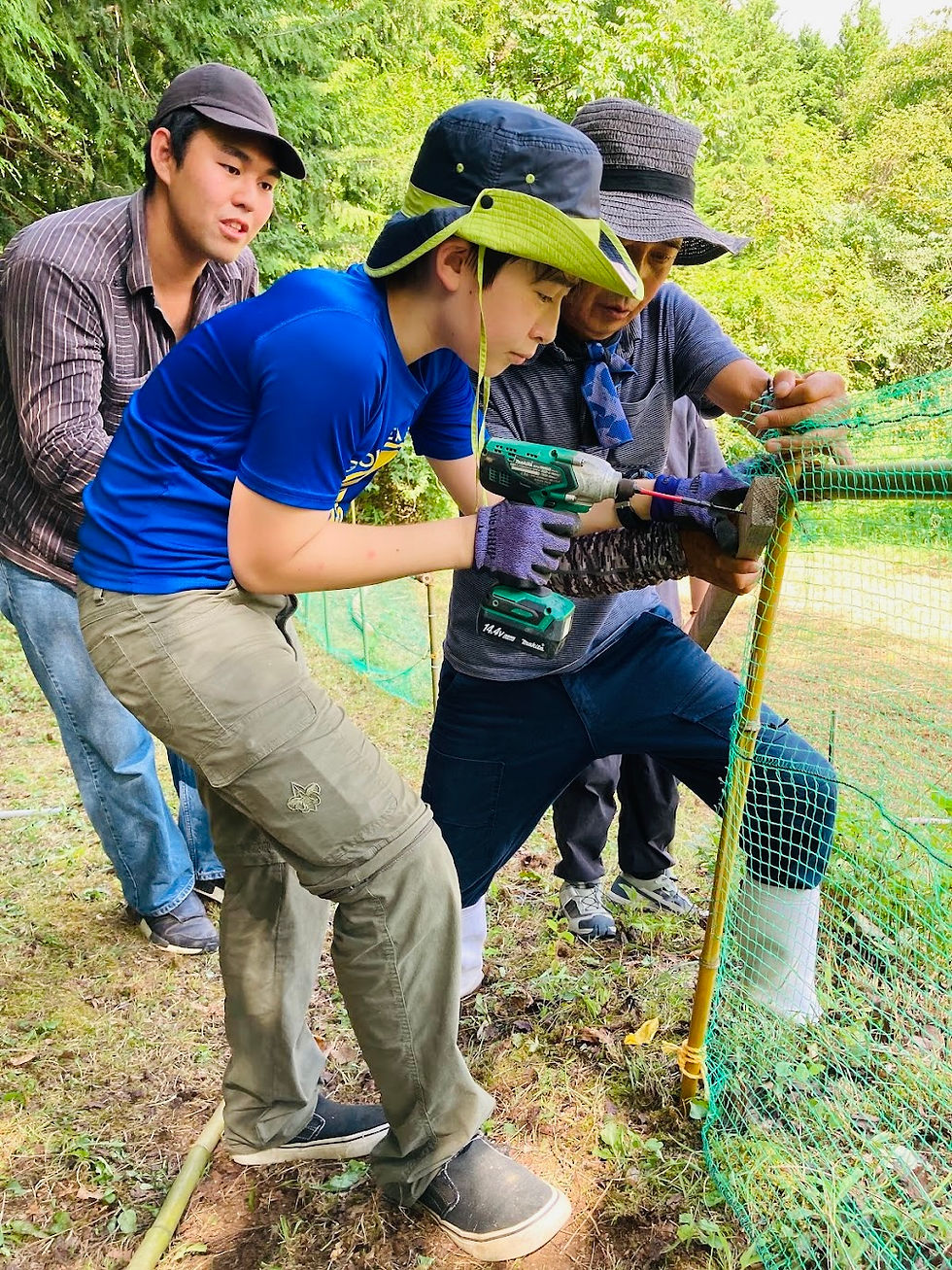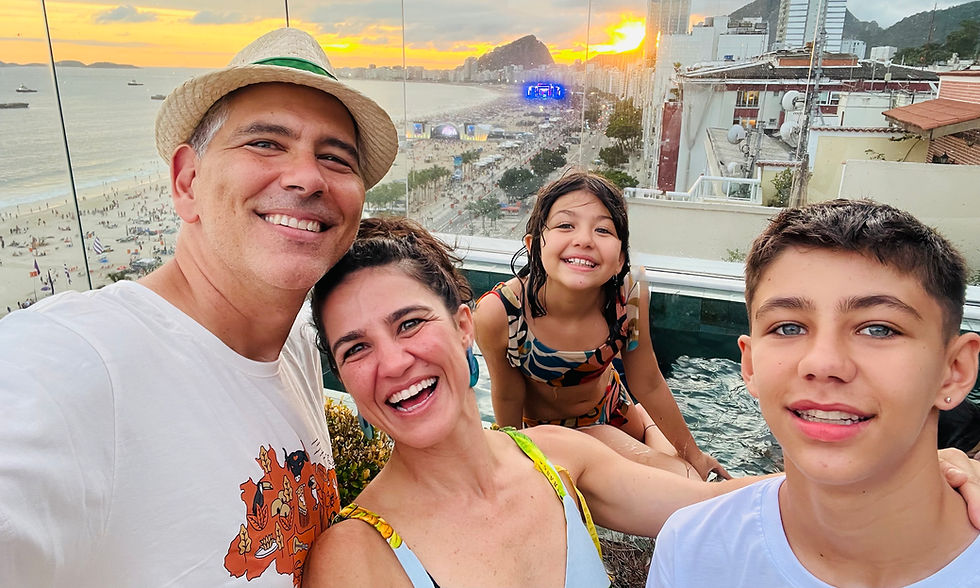Resilience and Rebuilding: Our Odyssey to Tohoku
- Wind Kim
- Oct 2
- 2 min read
Updated: Oct 3

For our middle school Odyssey this year, we went to Minamisanriku, Miyagi Prefecture, to learn about the 3/11 disaster. It was an amazing experience. Not only were we informed about the Tohoku earthquake and tsunami but we also learned how to survive such a disaster, work as a team, and not take our everyday lives for granted.

Our days were busy, filled with community work in the mountains, farming, visiting affected buildings and areas, and listening to stories from survivors. In contrast to these humbling, sometimes somber, experiences, we also saw some beautiful fireworks, held a blindfolded watermelon smashing competition, and laughed and played card games into the night.

We met lots of admirable people, including our camp director Abe-san. His home was swept away by the tsunami, and yet he wakes up at 3am every day to take a fishing boat out onto the water.

Abe-san was very determined to leave us with plenty of knowledge and as a strong team. Thanks to him, we had lots of experiences and made lots of memories––from having fun at the beach and working hard on a farm, to simulating the aftermath of a disaster by eating cold, canned mackerel. The mackerel was not the most popular experience among the students. But it did cultivate understanding and empathy on what it is like to eat survival food.


We met Sato-san, a mother who lost a six-year-old daughter. Her daughter, among five other children, were abandoned by the bus driver in a school bus and left to the tsunami.
However, it wasn’t the tsunami that took their lives in the end––it was a fire. This was heartbreaking. Especially to hear it firsthand from the mother. But we also held great respect for Sato-san, who could share this story with us and with many others; to spread awareness of the consequences of natural disasters.

We heard many stories such as those that emphasized the catastrophic events of 3/11. But, we also learned about the inspiring feat of rebuilding.
We visited a little park on the top of a hill called 恋人岬 (roughly translated to Lover’s Cape). It was built by Abe-san and his friend, after the tsunami had destroyed the original park.

Overall, just talking to the survivors who have found ways to move on with their life, while still honoring those who passed away because of the disaster and their normal everyday lives that were destroyed, was inspiring.
This Odyssey trip was educational, eye-opening, sometimes challenging––yet fun and inspiring at the same time. Even just seeing the stars every night was amazing. This journey reminded us that even in the face of unimaginable loss, hope can be rebuilt, just as surely as the stars continue to shine above us each night.
Moka, Eucalyptus Public Relations Manager



